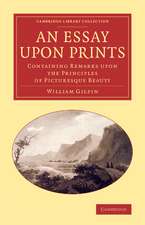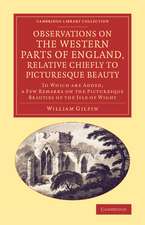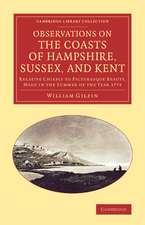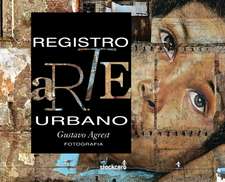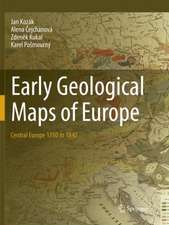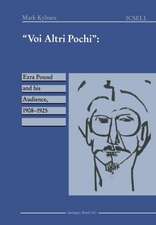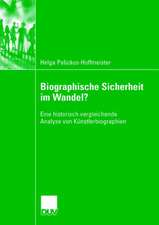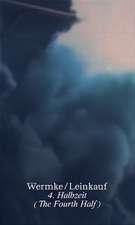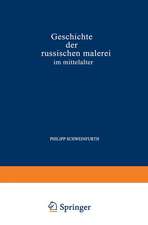The Illustrated History of the Elements: Earth, Water, Air, Fire
Autor Jan Kozák, Roger M. W. Mussonen Limba Engleză Hardback – 11 feb 2020
The book is a sequel to ‘The Illustrated History of Natural Disasters’, published in 2010. While the first book provided a detailed look into two main kinds of natural disasters (of seismic and volcanic character), this volume presents natural disasters of all kinds: geophysical, hydrological, climatological and biological.
The book is divided into three parts: the first part introduces the leading question as to whether the elements should be regarded as constructive, for giving origin to life on Earth, or destructive given the impact of natural disasters to society throughout history; thesecond illustrates the positive effects of nature’s elements; and the third part depicts and contextualizes the history of natural disasters such as earthquakes, tsunamis, volcano eruptions, landslides, avalanches, draughts, storms, fires, among others.
Preț: 307.10 lei
Nou
Puncte Express: 461
Preț estimativ în valută:
58.78€ • 60.57$ • 49.62£
58.78€ • 60.57$ • 49.62£
Carte tipărită la comandă
Livrare economică 28 februarie-06 martie
Preluare comenzi: 021 569.72.76
Specificații
ISBN-13: 9783030214241
ISBN-10: 3030214249
Pagini: 290
Ilustrații: XVII, 273 p. 283 illus., 281 illus. in color.
Dimensiuni: 210 x 279 x 23 mm
Greutate: 1.03 kg
Ediția:1st ed. 2020
Editura: Springer International Publishing
Colecția Springer
Locul publicării:Cham, Switzerland
ISBN-10: 3030214249
Pagini: 290
Ilustrații: XVII, 273 p. 283 illus., 281 illus. in color.
Dimensiuni: 210 x 279 x 23 mm
Greutate: 1.03 kg
Ediția:1st ed. 2020
Editura: Springer International Publishing
Colecția Springer
Locul publicării:Cham, Switzerland
Cuprins
Chapter 1. Introduction.- Chapter 2. Earth.- Chapter 3. Water.- Chapter 4. Air.- Chapter 5. Fire.- Conclusions.- Postscript.- References.
Notă biografică
Jan Kozák was originally engaged in laboratory seismology and later moved to historical studies in seismology and volcanology. In addition to his scientific work, he has been an ardent collector of old prints; within the last 40 years he collected one of the world largest series – over 2300 of pre-photographic depictions of earthquakes, volcanic eruptions, and tsunamis. Among his 170 publications there are over ten books of pictorial character dealing mostly with the Earth sciences, and also with historical architecture and European history. Hw is senior research scientists in the Geophysical Institute of the Czech Academy of Sciences.
Roger Musson is internationally known as a seismologist, author and broadcaster. He worked for over 30 years as a seismologist with the British Geological Survey in Edinburgh, specialising in the study of historical earthquakes, the history of seismology, and seismic hazard. His most recent book, “The Million Death Quake” ispublished by Palgrave Macmillan.
Textul de pe ultima copertă
This beautiful art book portrays the forces of nature through the main elements of Earth, Water, Air, Fire. It is composed from a large selection of unique images of a wide variety of sources, mostly private collections. It is a highly illustrated book, containing reproductions of rare engravings, maps both old and new, sketches, and diagrams.
The book is a sequel to ‘The Illustrated History of Natural Disasters’, published in 2010. While the first book provided a detailed look into two main kinds of natural disasters (of Seismic and Volcanic character), this volume presents natural disasters of all kinds: Geophysical, Hydrological, Climatological and Biological.
The book is divided into three parts: the first part introduces the leading question as to whether the elements should be regarded as constructive, for giving origin to life on Earth, or destructive given the impact of natural disasters to society throughout history; thesecond illustrates the positive effects of nature’s elements; and the third part depicts and contextualizes the history of natural disasters such as Earthquakes, Tsunamis, Volcano Eruptions, Landslides, Avalanches, Droughts, Storms, Fires, among others. Regardless of the fact that the order of filing the historical images in the present book according to obsolete classical four-elements concept by Empedocles and Aristotle, in the book text also a new, modern class of element-like categories, fitting the present gnosis in physics, is propound.
Caracteristici
Highly illustrated book, containing more than 200 illustrations of the elements and impacts of natural disasters Portrays all types of natural disasters, seismic, volcanic, hydrological, climatological and biological Covers many parts of the world throughout the centuries Follow-up to the previous successful title: 'The Illustrated History of Natural Disasters'




